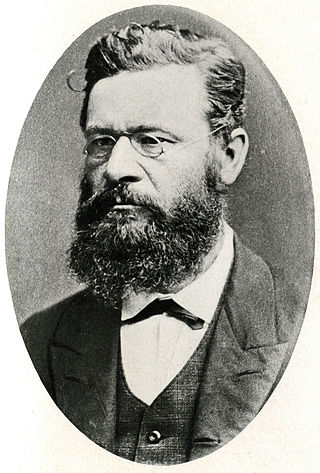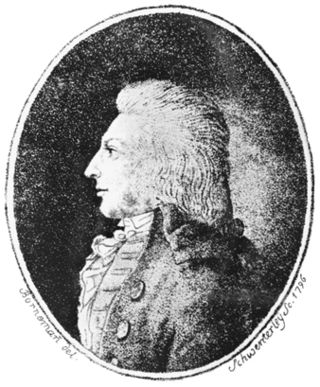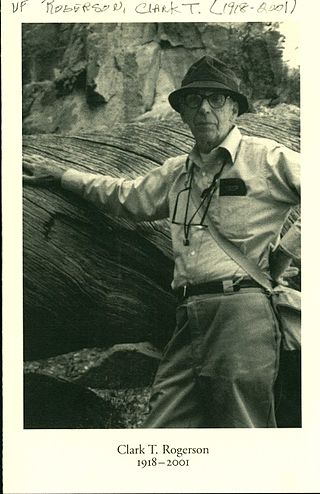
Petter Adolf Karsten was a Finnish mycologist, the foremost expert on the fungi of Finland in his day, and known in consequence as the "father of Finnish mycology".
Sir John Harrison Burnett was a British botanist and mycologist, who served as the principal and vice chancellor of Edinburgh University from 1979 to 1987.
Hyphomycetes are a form classification of fungi, part of what has often been referred to as fungi imperfecti, Deuteromycota, or anamorphic fungi. Hyphomycetes lack closed fruit bodies, and are often referred to as moulds. Most hyphomycetes are now assigned to the Ascomycota, on the basis of genetic connections made by life-cycle studies or by phylogenetic analysis of DNA sequences; many remain unassigned phylogenetically.

Erast Parmasto was a noted Estonian mycologist, bioscientist and botanist and onetime director of the Estonian Institute of Zoology and Botany.

The Orbiliaceae are a family of saprobic sac fungi in the order Orbiliales. The family, first described by John Axel Nannfeldt in 1932, contains 288 species in 12 genera. Members of this family have a widespread distribution, but are more prevalent in temperate regions. Some species in the Orbiliaceae are carnivorous fungi, and have evolved a number of specialized mechanisms to trap nematodes.
Richard William George Dennis, PhD, was an English mycologist and plant pathologist.

In mycology, a sanctioned name is a name that was adopted in certain works of Christiaan Hendrik Persoon or Elias Magnus Fries, which are considered major points in fungal taxonomy.

Cecil Terence Ingold CMG was "one of the most influential mycologists of the twentieth century". He was president of the British Mycological Society where he organised the first international congress of mycologists. An entire class of aquatic fungi within the Pleosporales, the Ingoldian fungi, were named after him, although recent DNA studies are changing the scientific names.

Clark Thomas Rogerson,, was an American mycologist. He was known for his work in the Hypocreales (Ascomycota), particularly Hypomyces, a genus of fungi that parasitize other fungi. After receiving his doctorate from Cornell University in 1950, he went on to join the faculty of Kansas State University. In 1958, he became a curator at The New York Botanical Garden, and served as editor for various academic journals published by the Garden. Rogerson was involved with the Mycological Society of America, serving in various positions, including president in 1969. He was managing editor (1958–89) and editor-in-chief (1960–65) of the scientific journal Mycologia.

Zoophagus is a genus of zygomycete fungi that preys on rotifers and nematodes. It was established in 1911 by Sommerstorff, who originally considered it to be an oomycete. It is common in a variety of freshwater habitats, such as ponds and sewage treatment plants.
Roy Watling, PhD., DSc, FRSE, F.I.Biol., C.Biol., FLS is a Scottish mycologist who has made significant contributions to the study of fungi both in the identification of new species and correct taxonomic placement, as well as in fungal ecology.
Franz Oberwinkler was a German mycologist, specialising in the fungal morphology, ecology and phylogeny of basidiomycetes.
John Webster was an internationally renowned mycologist, head of biological sciences at the University of Exeter in England, and twice president of the British Mycological Society. He is recognised for determining the physiological mechanism underpinning fungal spore release, though is probably best known by students of mycology for his influential textbook, Introduction to Fungi.
Richard Paul "Dick" Korf was an American mycologist and founding co-editor of the journal Mycotaxon. He was a preeminent figure in the study of discomycetes and made significant contributions to the field of fungal nomenclature and taxonomy. Korf was professor emeritus of mycology at Cornell University and director emeritus of Cornell University's Plant Pathology Herbarium.

John Waldo Taylor is an American scientist who researches fungal evolution and ecology. He is Professor of the Graduate School in the Department of Plant and Microbial Biology at the University of California, Berkeley.
Stanley John Hughes (1918–2019) was a Canadian scientist who is known throughout the global field of mycology for developing and introducing a precise and meticulous system for classifying fungi that is still used today. A naturalized Canadian, he was a federal research scientist for Agriculture and Agri-Food Canada at what is today the Ottawa Research and Development Centre.
Prof. Waceke Wanjohi is a professor at Kenyatta University who works in plant pathology, research, teaching, networking, and graduate education. She is the Deputy Vice Chancellor (Academic) at Kenyatta University. She was appointed to act as the Vice chancellor of the same university from July 2022. Dedicated to boosting Africa's competitiveness in the global arena by improving agricultural output in smallholder farming systems in Sub-Saharan Africa.
Amy Yarnell Rossman is an American mycologist and a leading expert in identifying fungi.
Brian Charles Sutton is a British botanist, phytopathologist, mycologist, known as one of the world's leading experts in coelomycete classification. He was the president of the British Mycological Society for the academic year 1985–1986.
Savoryellaceae is a family of aquatic based fungi. It is the only family in the monotypic order Savoryellales within the class Sordariomycetes, division Ascomycota.







